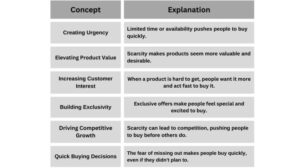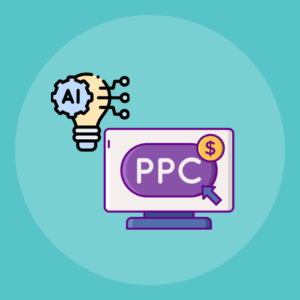
Product launch checklist 2025 is your ultimate guide to ensuring a smooth and effective product launch. In today’s competitive market, having a structured checklist can make all the difference between a successful introduction and a missed opportunity. From essential pre-launch tasks to post-launch evaluations, this checklist will help you stay organized and focused as you prepare to unveil your product to the world.
With components ranging from timeline organization to marketing strategies, this checklist covers all aspects necessary for building anticipation and engagement, ensuring your product not only reaches but resonates with your target audience. Let’s dive into the key elements that will steer you toward a successful launch.
Product Launch Checklist Essentials
Launching a product in 2025 requires meticulous planning and execution. Having a comprehensive checklist ensures that no critical components are overlooked, facilitating a smooth launch process. This checklist serves as a roadmap to guide teams through each phase, ensuring alignment and accountability.An effective product launch checklist encompasses several critical components. These components are pivotal in coordinating activities, defining responsibilities, and tracking progress leading up to the launch day.
By organizing a timeline of activities, teams can anticipate necessary tasks and prepare adequately, thus enhancing the chances of a successful launch.
Critical Components of the Checklist
The product launch checklist should include key elements such as market research, marketing strategies, product development milestones, and post-launch evaluations. Each component plays a significant role in ensuring that the product meets market demands and is well-received.
- Market Research: Understanding customer needs and market trends ensures that the product aligns with consumer expectations.
- Marketing Strategies: Developing a comprehensive marketing plan that includes digital campaigns, social media engagement, and press releases is essential for promoting the product.
- Product Development Milestones: Clearly defined stages of product development help track progress and ensure the product is ready for market.
- Sales Training: Equipping the sales team with product knowledge and selling strategies prepares them to effectively engage customers.
- Post-Launch Evaluation: Evaluating the launch’s success through metrics and feedback allows for adjustments in future strategies.
Timeline of Activities Leading Up to Launch Day
Establishing a timeline is crucial for organizing activities in the lead-up to the launch. A detailed schedule allows teams to allocate resources effectively and stay on track.
| Week | Activity | Responsible Party |
|---|---|---|
| 8 Weeks Before | Market Research and Analysis | Marketing Team |
| 6 Weeks Before | Finalize Product Design | Product Development Team |
| 4 Weeks Before | Launch Marketing Campaigns | Marketing Team |
| 2 Weeks Before | Sales Training Sessions | Sales Team Leader |
| Launch Day | Product Launch Event | All Teams |
| 1 Week After | Post-Launch Review | Management Team |
“A well-structured timeline is the backbone of a successful product launch.”
Essential Tasks and Responsible Parties
Defining essential tasks along with responsible parties is vital to ensure accountability and streamline the launch process. Clarity in roles helps in better coordination among teams.
- Product Development: Responsible for creating and finalizing the product.
- Marketing Team: Oversees the promotion and advertising strategies.
- Sales Team: Engages with customers and drives product sales.
- Customer Support: Prepares to handle inquiries and support post-launch.
- Management: Reviews overall strategy and performance metrics.
Building Popularity and Engagement

Creating a strong foundation for your product launch involves harnessing the power of popularity and engagement. By effectively enhancing link popularity and actively engaging with your audience, you set the stage for a successful introduction to the market. This section will explore practical techniques to create buzz and gather valuable insights, ensuring your product resonates with potential customers.
Enhancing Link Popularity
Building link popularity is crucial for boosting your product’s visibility online before its launch. This can be achieved through various strategies that increase the number of inbound links and, consequently, improve your search engine ranking.Firstly, creating high-quality, shareable content is essential. Content such as infographics, videos, and blogs that provide value or entertainment can encourage others to link back to your website.
Additionally, leveraging social media platforms to promote this content widens your reach and encourages sharing.Collaborating with influencers or bloggers in your niche can also significantly enhance your link popularity. Guest posting on reputable sites or co-creating content with influencers not only establishes credibility but also directs their audience to your product.Moreover, participating in online communities and forums relevant to your industry allows you to share insights and link back to your product.
This natural integration of links in discussions can draw genuine interest from potential customers.
List Building Strategies
Maximizing audience reach through list building is essential for engagement and communication with potential customers. An effective email list allows you to nurture leads and keep your audience informed about your product launch.Offering valuable resources in exchange for email subscriptions can significantly enhance your list-building efforts. Consider creating eBooks, whitepapers, or exclusive access to webinars that relate to your product.
This not only generates interest but also establishes your authority in the field.Utilizing social media to promote your newsletter or email sign-up can also expand your reach. Run targeted ad campaigns that highlight the benefits of subscribing, ensuring you attract the right audience.Incorporating pop-ups or sign-up forms on your website can further capture visitors’ attention and encourage them to subscribe before they leave your site.
Utilizing Paid Surveys for Feedback
Gathering feedback through paid surveys is an effective method to refine your product offerings and ensure they meet the needs of your target audience. Paid surveys incentivize participation, leading to higher response rates and more insightful data.Start by identifying specific aspects of your product that you wish to gather feedback on, such as features, design, or pricing strategies. Craft concise and clear survey questions that encourage honest and thoughtful responses.Promoting these surveys through your existing channels, such as email lists or social media, can attract a diverse audience willing to share their opinions.
Offering participants a small monetary reward or discount on the future product can enhance participation rates.Analyzing the feedback received from these surveys provides actionable insights that can be used to tweak your product or marketing strategy. This approach ensures that the product launched is closely aligned with consumer expectations and preferences.
“Understanding your audience through feedback not only improves your product but also builds trust and loyalty.”
Effective Marketing Strategies
In the fast-paced world of product launches, having a solid marketing strategy is crucial for ensuring that your product gains the attention it deserves. Leveraging modern platforms and techniques can create buzz, engage potential customers, and ultimately drive sales. In this section, we’ll explore innovative marketing methods, including the growing influence of podcasting and the effectiveness of PPC advertising.
Role of Podcasting in Product Promotion
Podcasting has emerged as a powerful tool for product promotion, offering a unique way to connect with target audiences through engaging content. This medium allows brands to share stories, insights, and expert opinions while building a community around their products. When considering podcasting for your product launch, think about episode themes and ideas that resonate with your target demographic. Here are some effective approaches to create compelling podcast content:
- Behind-the-Scenes Stories: Share the journey of your product development, including challenges faced and lessons learned. This humanizes your brand and creates a relatable narrative.
- Expert Interviews: Invite industry experts or influencers to discuss trends and insights related to your product. Their authority can lend credibility and attract their audience to your brand.
- User Testimonials: Feature stories from early adopters or beta testers who can provide firsthand accounts of how your product has impacted their lives. Real experiences foster trust and authenticity.
- Educational Content: Create episodes that educate your audience about the problems your product solves, providing valuable information that positions you as a thought leader in your industry.
The versatility of podcasts allows for creativity in engaging potential customers, fostering a sense of community around your product, and creating a loyal listener base eager for updates.
Implementation of PPC Advertising Strategies
PPC (Pay-Per-Click) advertising is an effective way to reach specific audiences through targeted advertising campaigns. This method allows businesses to display ads to users based on their search queries, interests, and demographics, ensuring that marketing efforts are efficient and cost-effective. To implement PPC advertising strategies successfully, consider the following tactics:
- Research: Identify relevant s that your target audience is searching for. Use tools like Google Planner to find terms that have high search volumes but low competition.
- Ad Copy Optimization: Write compelling ad copy that clearly communicates your product’s value proposition. Use action-oriented language and include a strong call to action.
- Retargeting Campaigns: Use retargeting to reach users who have visited your website but did not convert. This keeps your product top of mind and encourages potential customers to return.
- A/B Testing: Regularly test different ad variations to see which performs best. Adjusting your strategy based on data can significantly improve ad performance over time.
Through careful implementation of PPC strategies, brands can achieve a targeted reach, ensuring that their product launch resonates with the right audience.
PPC Publishing as a Method for Driving Interest
PPC publishing is an effective method for generating interest and gaining traction before a product launch. By publishing ads on various platforms, businesses can create anticipation and excitement around their upcoming release.Important aspects to consider for PPC publishing include:
- Landing Page Creation: Design dedicated landing pages that provide detailed information about your product. These pages should be optimized for conversions and provide users with a simple way to engage, such as signing up for updates.
- Social Media Advertising: Utilize platforms like Facebook, Instagram, and LinkedIn to run targeted ads that build awareness and hype ahead of the launch. Engaging visuals and compelling messaging can capture attention.
- Countdown Campaigns: Use countdown ads to create urgency and excitement. Highlight key features or benefits while reminding users of the upcoming launch date.
- Influencer Partnerships: Collaborate with influencers who can help amplify your product’s reach. Their endorsement can attract their followers, expanding your audience base.
By strategically leveraging PPC publishing, businesses can effectively build momentum and ensure a successful product launch that captures the interest of potential customers.
Product Creation and Launching Process
Creating and launching a product is a complex endeavor that requires careful planning and execution. It’s essential to align your product with current market trends to ensure it meets consumer needs and stands out in a crowded marketplace. This section will provide a structured approach to product creation and launching processes, focusing on effective strategies and measurable outcomes.
Framework for Successful Product Creation
A well-designed framework for product creation involves several key elements, ensuring that the development aligns with market demands. This framework should incorporate the following steps:
- Market Research: Conduct thorough research to understand target demographics, competitors, and potential market gaps. Utilize surveys, focus groups, and trend analysis tools to gather data.
- Concept Development: Brainstorm and refine product ideas based on research findings. Create sketches or prototypes to visualize the concept.
- Validation: Test the product concept with potential users to gather feedback and identify necessary adjustments before proceeding to production.
- Design and Development: Finalize product specifications and begin the development process, ensuring that design aligns with user needs and brand identity.
- Testing: Implement rigorous testing protocols to ensure product quality and functionality. Gather feedback from testers and make necessary improvements.
Steps for Launching a Product
Launching a product involves meticulous planning, which can be divided into pre-launch and post-launch activities. A successful launch ensures maximum visibility and engagement, leading to healthy sales figures.
- Pre-Launch Activities:
- Create anticipation through teasers and sneak peeks via social media and email marketing.
- Build a landing page to capture leads and provide information about the product.
- Engage influencers or brand ambassadors to amplify your reach.
- Launch Day: Execute a well-coordinated launch, utilizing all marketing channels to inform the audience about the availability of the product.
- Post-Launch Activities:
- Monitor customer feedback and reviews to identify areas for improvement and address any issues.
- Continue marketing efforts to maintain momentum, utilizing retargeting strategies to reach interested customers.
Post-Launch Success Measurement Checklist
Evaluating the success of a product after launch is critical for understanding its performance in the market. This checklist includes vital Key Performance Indicators (KPIs) and suggested analytics tools to effectively gauge impact.
- Sales Performance: Track total sales, revenue generated, and sales growth compared to projections. Tools like Google Analytics and Shopify can provide insights into sales patterns.
- Customer Engagement: Measure customer interactions through metrics like website traffic, social media engagement rates, and newsletter open rates.
- Customer Feedback: Collect customer reviews and Net Promoter Score (NPS) to assess satisfaction and loyalty.
- Market Share Analysis: Evaluate changes in market share within the relevant industry sector, using tools like Statista or Nielsen for market data.
- Return on Investment (ROI): Calculate ROI by comparing profit margins against marketing and production costs to determine overall profitability.
Last Point

In summary, the Product launch checklist 2025 serves as a comprehensive roadmap for navigating each stage of your product’s introduction. From meticulous planning and engaging marketing techniques to effective post-launch analysis, having this structured approach will significantly enhance your chances of success. Embrace these strategies to turn your launch dreams into reality, and watch as your product makes its mark in the market.
Expert Answers
What is the importance of a product launch checklist?
A product launch checklist helps ensure that every critical step is accounted for, reducing the chances of oversight and maximizing the potential for a successful launch.
How can I build an audience before the launch?
You can build an audience by utilizing list-building strategies such as social media engagement, email marketing, and offering pre-launch promotions to attract interest.
What role does feedback play in the launch process?
Feedback is vital as it helps refine your product and marketing strategies, ensuring they align with customer expectations and needs.
What metrics should I track post-launch?
Key metrics to track include sales figures, user engagement rates, customer satisfaction, and overall market penetration to evaluate the success of your launch.
How can I create effective marketing content for my launch?
Effective marketing content should be engaging, informative, and tailored to your target audience, incorporating storytelling and clear calls-to-action to drive interest and conversion.





